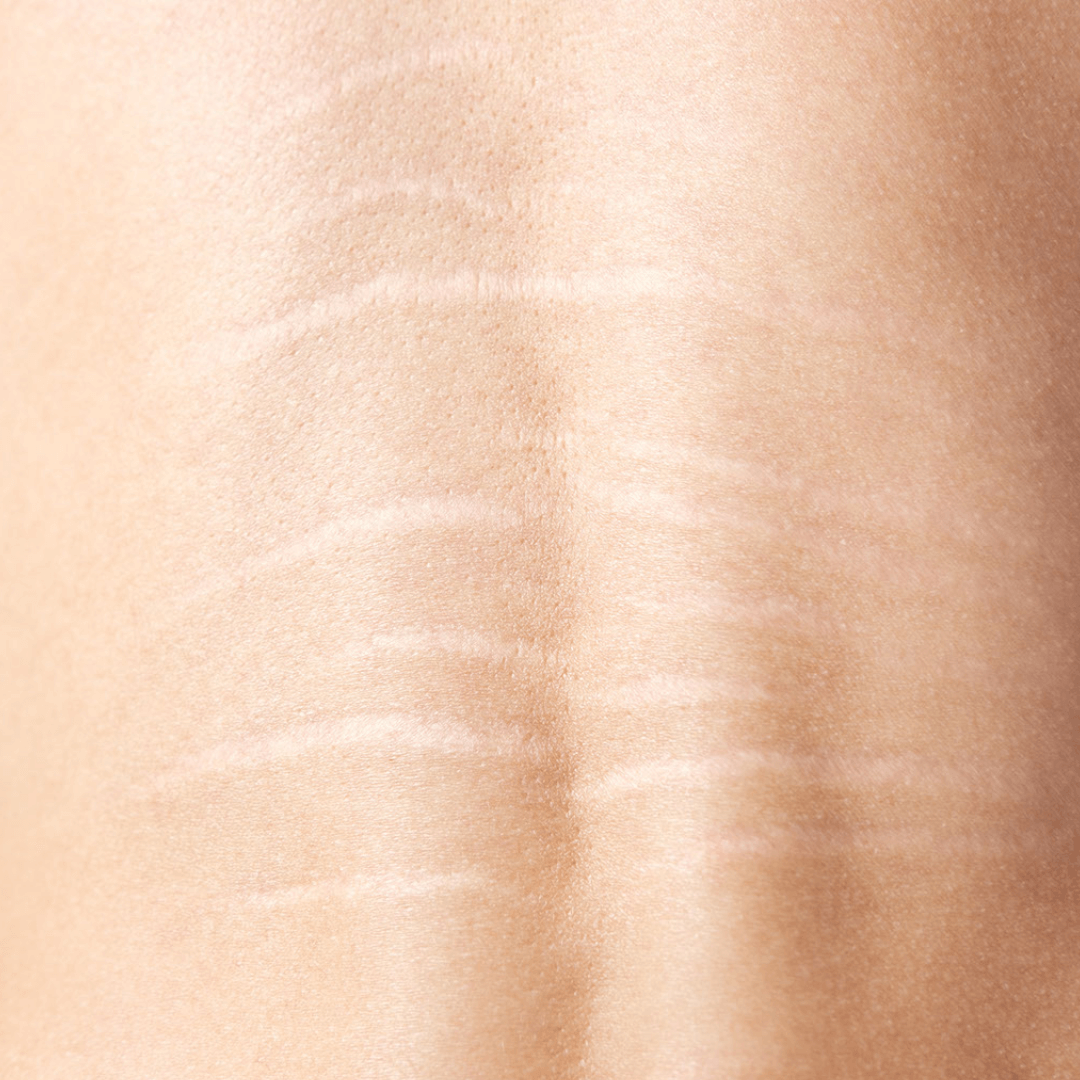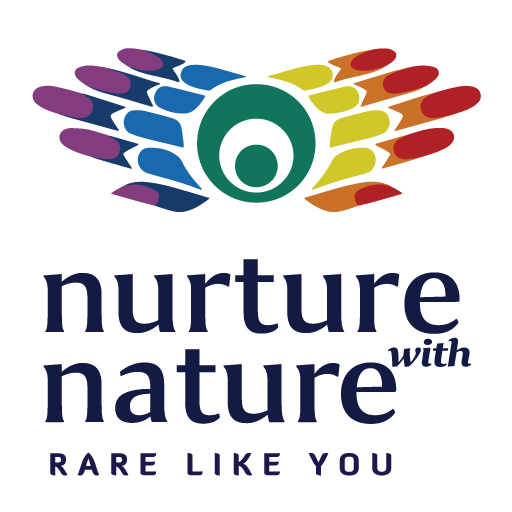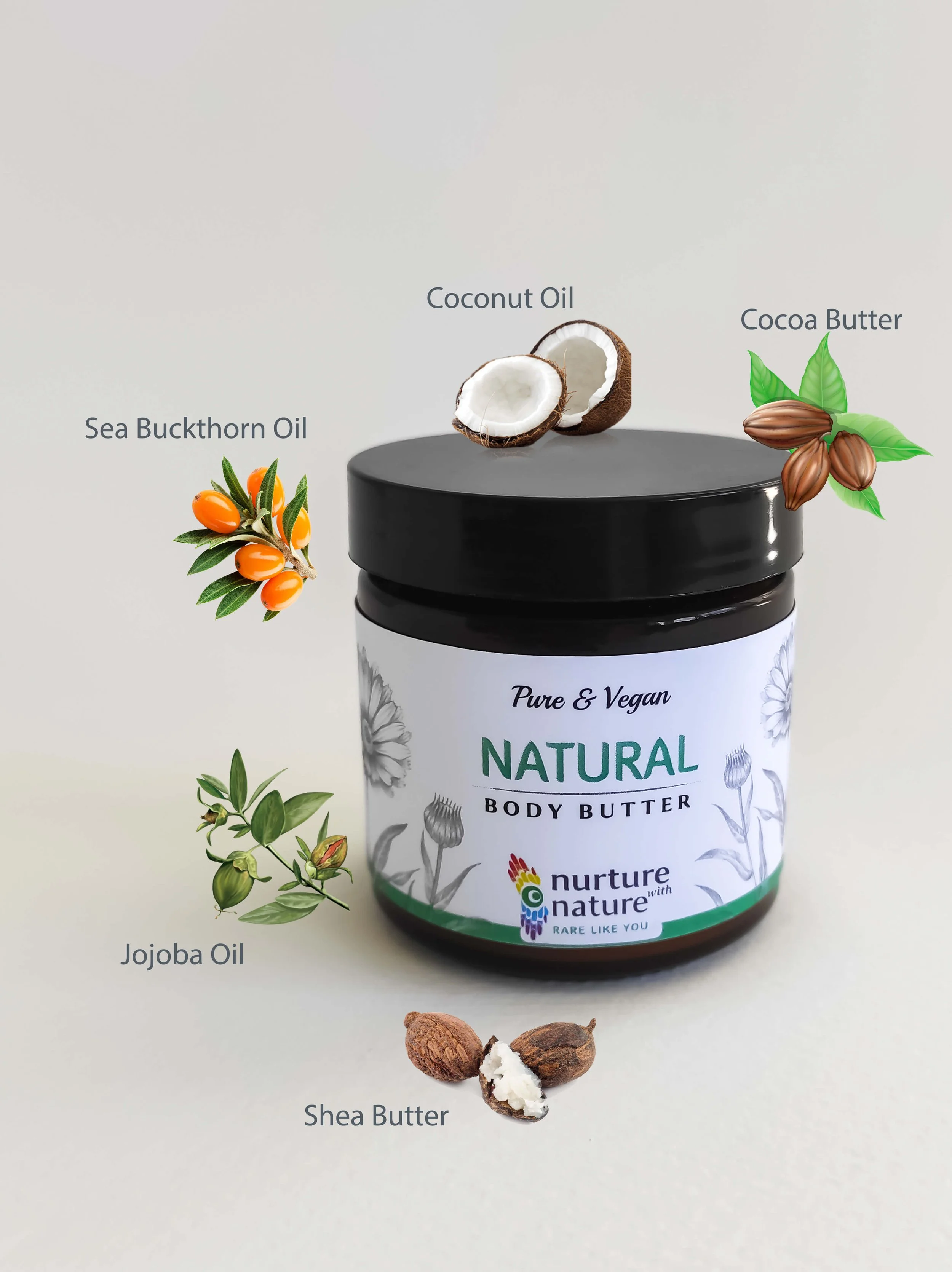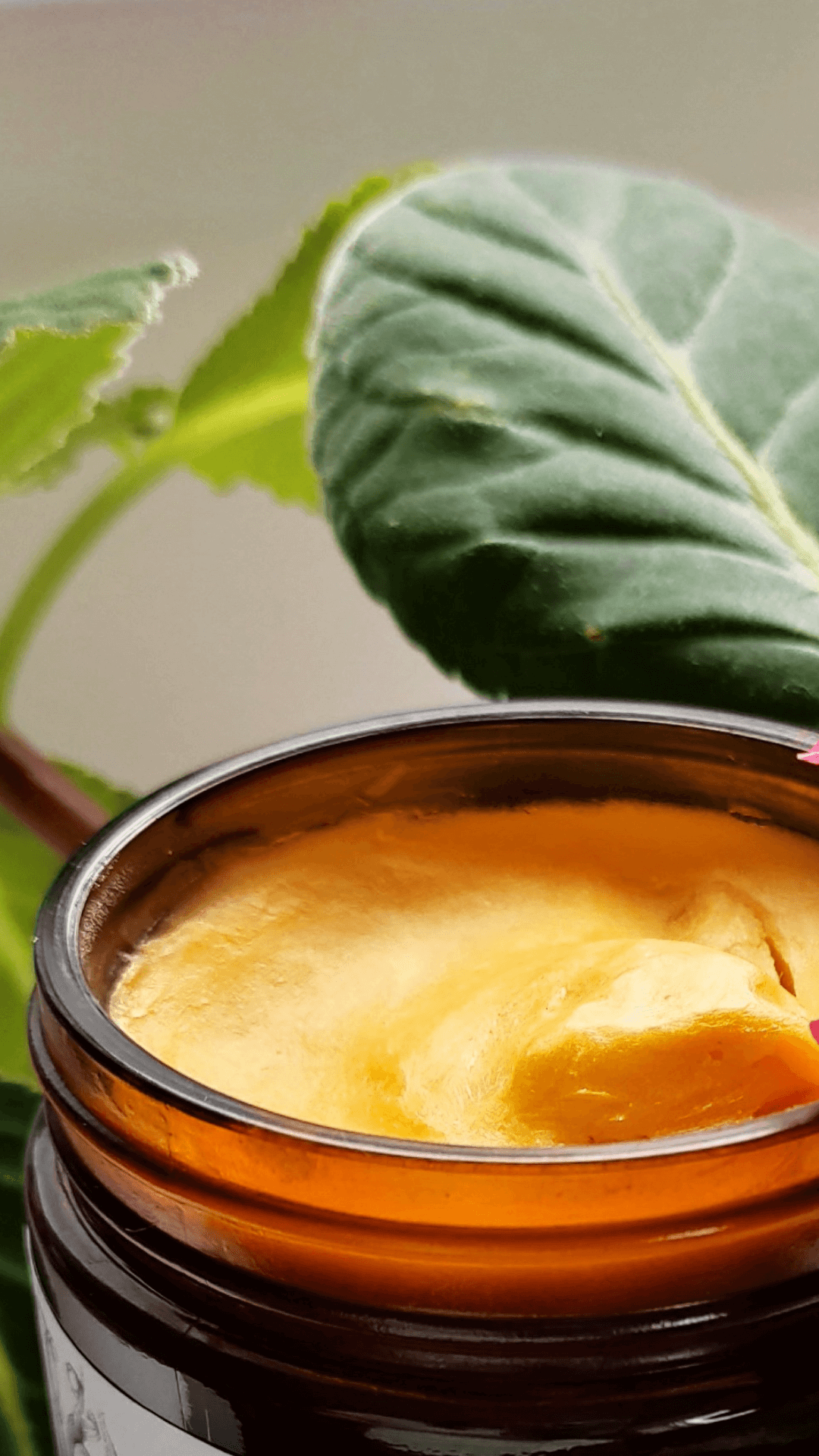Soothe and Smooth: The Ultimate Guide to Reducing Stretch Marks
Share

Stretch marks are a perfectly natural part of the human body.
Our bodies stretch, grow and change. Stretch marks, as well as wrinkles, tell the story of a life lived. All we have to do is learn to stop the body hate. Easier said than done, but once you make a conscious decision to treat yourself with a little more respect and attention, self-love and self-acceptance start to happen naturally. It is empowering to take care of yourself not because you want to get rid of or fix something, but because you are aware that your body always does its best and you are thankful for all it's done to carry you through. Understanding that positive self-talk is crucial in changing your perception and unlearning what you have been taught by society will help you feel better in your skin with all of your “imperfections.”
Despite the fact that we spend our entire lives in them, there's still a whole lot we don't know about our bodies. Our body is constantly working. Your skin does a big job for you too. Each inch of skin is made up of 19 million skin cells, 650 sweat glands, 20 blood vessels, and 1,000 nerve endings. Every inch of your skin has an exact stretchiness and strength for its location and Your skin constantly sheds dead cells, about 30,000 to 40,000 cells every minute! (DermSpecialists).
So why do stretch marks occur?
Stretch marks are caused when the skin rapidly stretches as a result of sudden growth or weight gain, oftentimes during puberty or pregnancy. When we grow or gain weight slowly our skin has time to stretch with us, but when skin is pulled too tight or too quick its production of collagen and elastin fibers is interrupted. Once these tissues are over-stretched or damaged, they lose their elasticity. This means they don't bounce back. On the surface, this shows as stretch marks.
Stretch marks are common. They can affect both men and women but are more frequent among women (PMC).
Will stretch marks go away naturally?
The body types of different individuals and their concerns are different (your age, skin type, and overall health) so the result differs from person to person. Stretch marks are sometimes considered inside-out scars. Like any scar, stretch marks don't go away, but they do fade with time. In their initial stages of formation, they appear in red or purple color, and gradually, as the inflammation in the dermis subsides they fade into a silvery-white color.
Why do stretch marks itch?
The itch is as natural and normal as the marks. Stretch marks itch during their developing process, as the increased blood flow to the area breaks down the collagen and can result in more permanent marks. Many factors are responsible for making your stretch marks itch, including stretching skin, dryness, and compromised skin barriers.
Which stretch marks are harder to treat?
If you do treat your stretch marks early you can reduce the appearance of minor marks. Once they fade and become white, they are fully matured. Taking care of white marks can take more time and consistency on your end.
Express self-love to your body by rubbing your stretch marks using pure, high-quality products, without fear or the pressure of wanting to get rid of them. In the management of stretch marks, prevention is a priority, with emphasis on topical formulations that maintain the elasticity and hydration of the skin. Consistent use of super-moisturizing formulations may enhance the appearance of your skin. It may help improve your skin tone and the general appearance of your complexion (ResearchGate).
How can you nurture and take care of stretch marks?
Natural Microdermabrasion and Moisturization
Natural moisturizers like cacao butter and shea butter can add rich, healing properties to your natural microbiome. Regular exfoliation using a moisturizing scrub can improve the appearance of stretch marks too.
Massaging
Stretch marks massage is an effective way to decrease scar tissue build-up and help make stretch marks less noticeable.
Stretch marks massage is one method of softening and flattening scars. It serves several important functions:
• Promoting collagen remodeling by applying pressure to scars
• Helping to decrease itching
• Providing moisture and flexibility to the scar
Use the pads or soft tips of your fingers to massage the stretch marks or scar and tissue around the affected area. Massage in all three directions.

Circles: Using two fingers make small circles over the length of the scar and the skin surrounding it.
Vertical: Using two fingers massage the scar up and down.
Horizontal: Using two fingers massage the scar from side to side.
Massage should be done two to three times daily for ten minutes each time (Moffitt Center).
How Body Butter can support and nourish your stretch marks?
A blend of nourishing oils like shea butter, sea buckthorn oil, argan oil, and jojoba oil help increase skin elasticity and maintain skin moisture.
-
Reduce skin irritation and inflammations: Sea-buckthorn oil improves blood circulation, facilitates oxygenation of the skin, removes excess toxins from the body, and easily penetrates through the epidermis. Because inside the skin omega-6 is converted to prostaglandins, seabuckthorn oil protects against infections and eliminates inflammation (ResearchGate).
-
Nourish and protect: Cacao butter is a powerful antioxidant. It contains flavonoids, including antioxidant polyphenols. They neutralize free radicals, restructure the epidermis and ensure proper cellular functioning. High in essential fatty acids, cocoa butter hydrates the skin deeply. The oleic, palmitic, and stearic acids, all help nourish the skin (PMC).
-
Make skin healthy and supple: Sea Buckthorn’s unique unsaturated fatty acids, such as omega-7 and omega-6, give seabuckthorn oil skin regeneration and repair properties. omega-7 was able to support collagen regeneration in skin cells due to its anti-inflammatory properties and the way they function in the skin. These findings show that omega-7 supplementation is likely an excellent option for improving overall skin health (MDPI).
-
Encourage regeneration processes: Shea butter was shown to boost collagen production. Collagen and elastin are the major structural proteins providing skin with toughness and plumpness and α-amyrin and lupeol, the triterpenes found in the unsaponifiable fraction of Shea butter, were found to contribute to the inactivation of proteases such as metalloprotease (e.g., collagenase) (ScienceDirect).
Safe to use on any kind of skin type: It is made up of natural ingredients and hence is safe for use during and after pregnancy. It contains absolutely no nasty ingredients.


